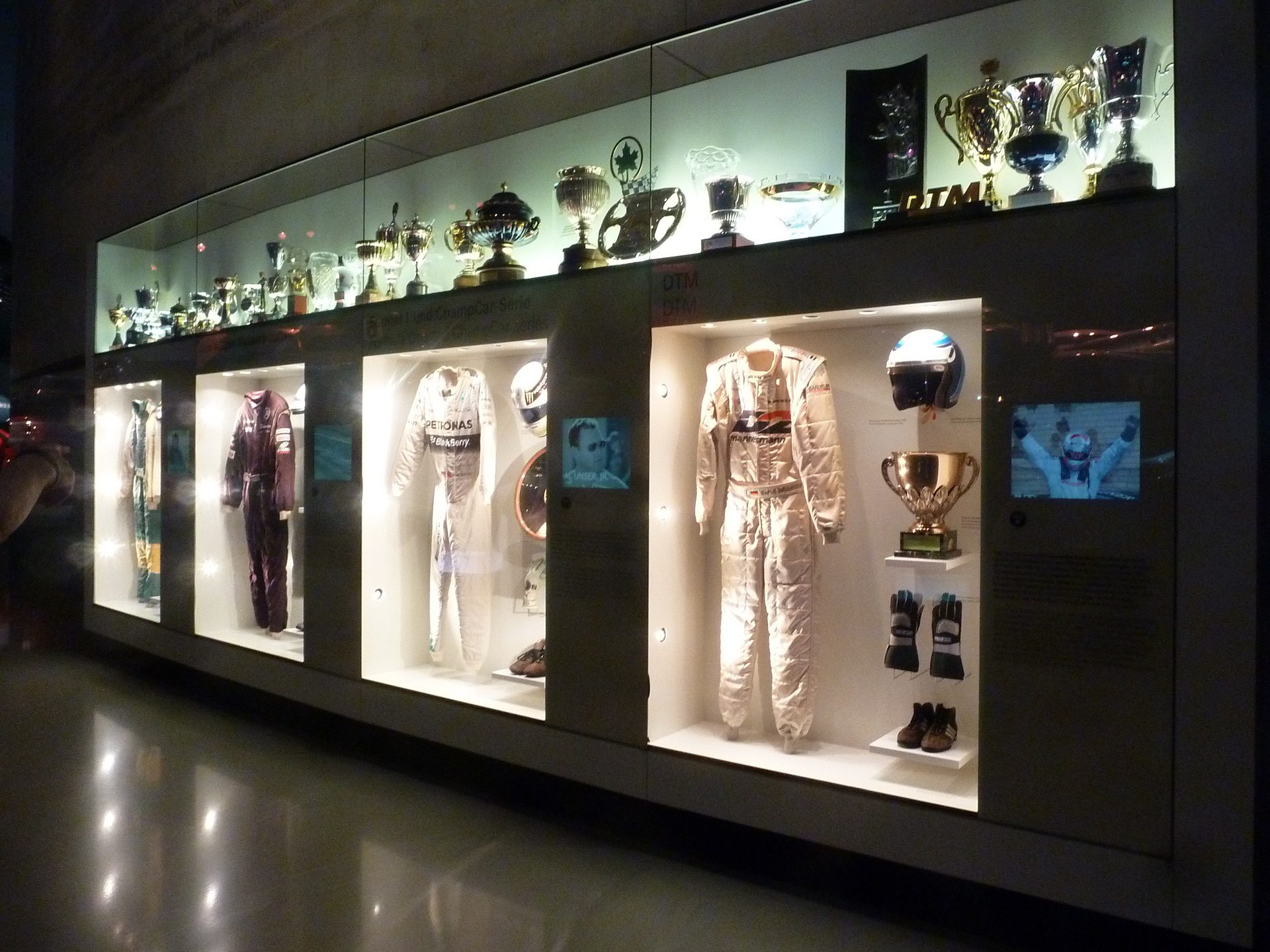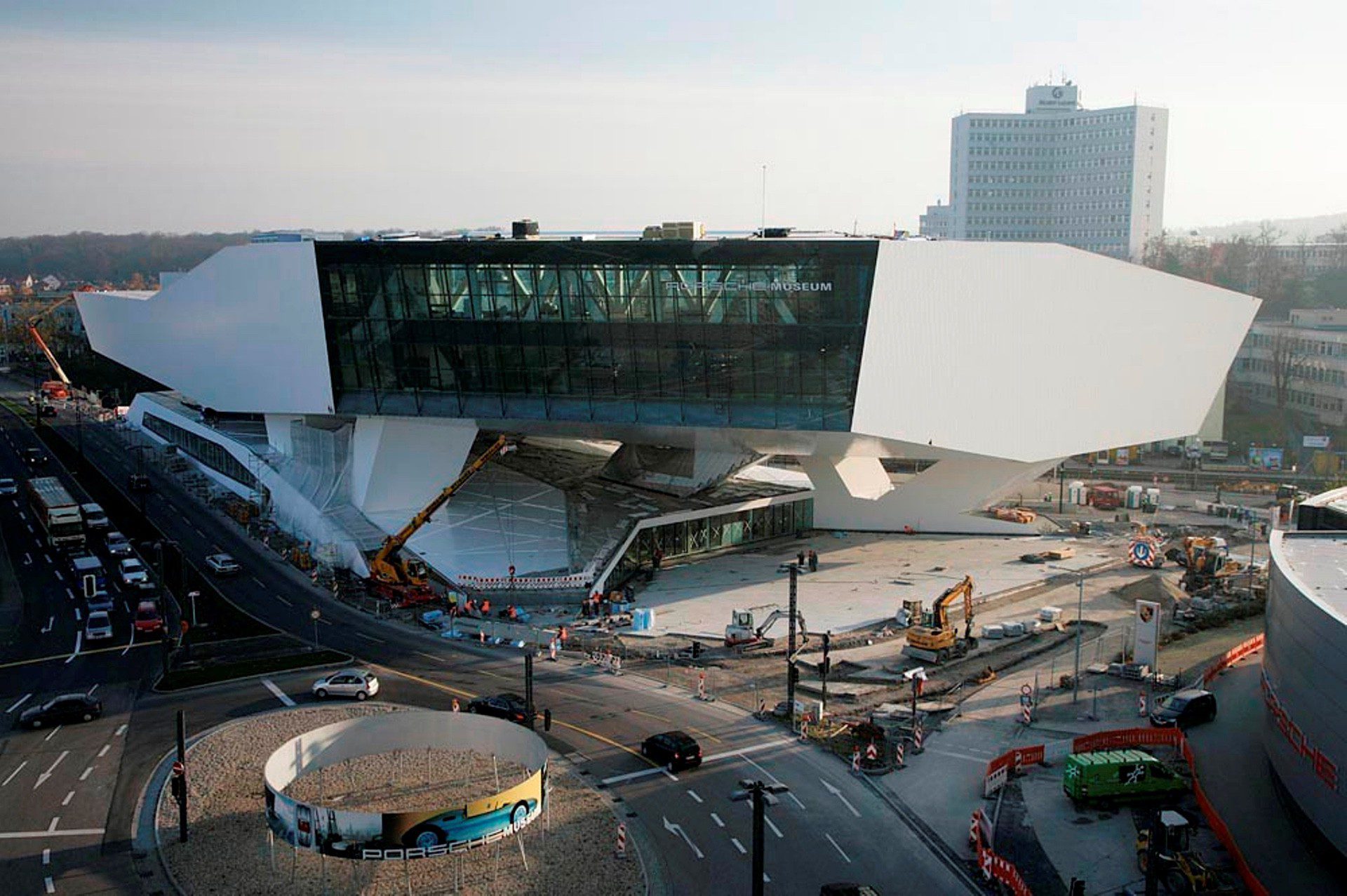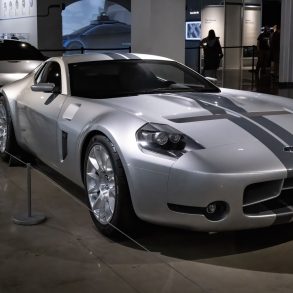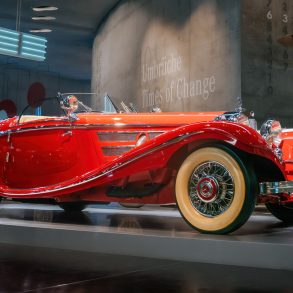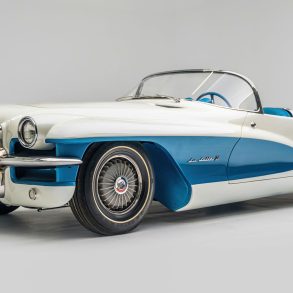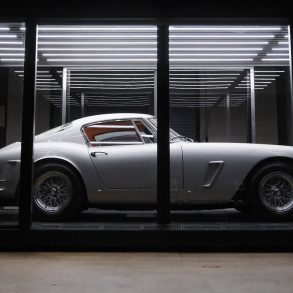All words and photos by Matt Stone.
Transportation museums around the world vary—from purpose built, factory backed, artistic (and often architectural) wonders to old warehouses thinly repurposed into museum or personal (or foundation) collection display (and/or storage) duty. To take in and fully appreciate some of the world’s best, a visit to Germany is in order and will be time well invested.
All of the large, international Germany-based carmaking concerns have long, deep histories and have made it a core purpose to document and celebrate their pursuits. We recently visited two of the largest, best developed, and most accessible among these institutions: the Porsche factory Museum in Stuttgart-Zuffenhausen, and the colossal Mercedes-Benz museum complex, also in Stuttgart.
Visiting the Porsche Museum
Porsche’s fabulous museum sits in the heart of the company’s sprawling factory grounds, and you won’t have to look very hard or far to figure out that Stuttgart-Zuffenhausen is a major company town—the fact that the Museum’s address is PorschePlatz 1 (Porsche Place 1) ought to tell you something.
This breathtaking architectural wonder officially opened to the public on January, 31, 2009, so it isn’t many years past its 10th birthday. The design of this remarkable facility is credited to Viennese architect Delugan Meissl, and written descriptions barely do it justice; photos help tell the story, but you have to stand at the entrance and see it in person to grasp the sheer power of the design concept.
The museum comprises 5600 square feet of exhibit space, plus an immaculate workshop and storage, a truly world class steakhouse restaurant, the company’s archives, a comprehensive museum shop, and other miscellaneous spaces. There’s a full service Porsche dealer just across the driveway from the museum proper, and a variety of Porsche factory office and assembly buildings surround the museum site. To stand at the museum’s forecourt, you’re truly in the heart and center of Porscheville.

As you might expect of an institution dedicated to the history of a company and family dating back some eight decades, the museum begins with introductions of the founders and major players in Porsche history, beginning with the good Doctor himself, Ing. h.c Ferdinand Porsche (senior), who—as if knowing there would be a museum of such significant global importance—famously said, “those who have the good fortune to turn their dream into a business owe it to the world to be the custodians of such dreams.”


From then on, visitors are led on a remarkable voyage that takes into account the company’s model lineup evolution, to include tractors (affectionately called Schleppers), military vehicles, and the genesis of the company’s efforts in Motorsports—including everything from hillclimbs and rallies to Le Mans, IndyCar racing, and Formula 1.
You’ll see the earliest 911s, 959 prototypes, Porsche-engined McLaren F1 machines, and a mouthwatering bevy of 917, 956, 962 endurance racers.
Besides the depth, breadth, and beauty of nearly everything you see, you’ll be impressed with how few of the cars are surrounded by ropes, and stanchions. Naturally, no touching is allowed, but you’ll in many cases enjoy clean and unfettered looks at each exhibit, and equally clear photo ops. The signage is informative, without being over the top or taking too long to read, and there are a variety of hands-on learning experiences for the youngsters. Personally guided and virtually presented headset tours are also offered.
Other Features of the Porsche Museum
You won’t starve here either, nor be short of shopping opps. The museum store has it all, from die-cast models and T-shirts to watches and books. The Coffee Bar will help whet your whistle (and quench the need for one of those perfectly soft, fresh German pretzels). Boxenstopp means “pit stop” in German, and this is a nice place to sit down for lunch, dining indoors or outside on the terrace at the front of the property.
Should you have an evening to invest in truly fine dining, make sure to get a table at Christophorus, where the specialty of the house is specially-imported US prime beef. Fabulous and truly a treat.
With some time and planning, you can further round out your visit with the test drive in a new Porsche, and as you’d expect, the property is immaculate and fully set up with sensitivity to any COVID concerns, as well as being accessible for people with specific mobility requirements.
Porsche Museum Contact Info & Address
Porscheplatz 1
70435 Stuttgart Zuffenhausen, Germany
https://www.porsche.com/usa/aboutporsche/porschemuseum/
info.museum@porsche.de
+4908003560911
Open Tuesdays–Sundays
Visiting the Mercedes-Benz Museum
The company we now know as Mercedes-Benz is widely credited for inventing the modern automobile, which traces its beginnings to the Benz Patent-Motorwagen (Benz “patent motorcar”). Built in 1885 by the German Carl Benz, it is a self-propelled vehicle for carrying people, widely regarded as the world’s first practical automobile, and the first car put into series production. It was patented and unveiled in 1886, and the original cost of the vehicle was 600 imperial German marks—approximately 150 US dollars (equivalent to $4,524 in 2021).
Karl’s wife Berta demonstrated its feasibility in a trip from Mannheim to Pforzheim in August 1888, shortly before it became the first commercially available automobile in history in the late summer of 1888. From these auspicious yet somehow humble beginnings, the company and the brands we now know as Daimler-Benz and Mercedes-Benz have grown to make up one of the world’s largest and most significant transportation concerns in the world.
Its products and product lines run the gamut from small industrial engines to Formula 1; from trucking to micro cars; from high-tech diesel technology to aircraft and EVs. It only makes sense that such a long, rich, and deep history deserves proper telling and celebration, and today both are accomplished in a fabulous museum and vehicle center campus in Stuttgart, Germany: the Mercedes-Benz Museum, located at Mercedesstraße, directly next to the Daimler factory in Stuttgart and a stone’s throw away from the Mercedes-Benz Arena, home to the German Bundesliga (football/soccer league) club VfB Stuttgart.
The primary museum structure was Designed by Dutch architect Ben van Berkel and opened in 2006. The museum has been designed like a double helix with a clover leaf pattern. The exhibits it houses include 160 vehicles and over 1,500 displays on any given day. It is claimed to be the only museum in the world that can document in a single continuous timeline about 130 years of auto industry history, right from the first product created in 1886. The shell of the museum is made of glass and aluminum. Exhibit space is spread over nine floors, encompassing 17604 sq. ft.
Your visit to the museum begins on the top floors, where the earliest days of the company, its forebears, and technology are explored in fine detail. You’ll see the very earliest Daimler, Benz, and Mercedes vehicles, plus trucks, boats and aircraft. Then a series of ramps and staircases descends to successively lower floors, each marking different levels of time, progress, and advancement.
The vehicle displays are particularly rich, from the smallest and humblest Mercedes-Benz models to a smorgasbord of those used in television, movies, by heads of state, and in other areas of history and pop culture.
The seasoning on the whole thing includes concept cars, “silver arrow” streamliners and land speed record holders, plus a plethora of archival photos, images, and other items helping to tell the entire Daimler Benz story. As you might imagine, the museumcraft, lighting, descriptive signage, and exhibit designs are done to the very highest levels.
Most displays are strictly hands off, although a few are served up for visitors to enjoy more directly—such as a massive, multi-colored school bus, which classes of visiting school students are allowed to board. Another among many interesting design aspects of the museum are the elevators, which run on tracks up and down the open central column of the building, and each of which is equipped with digital slide projectors that flash archival images onto the inner walls of the halls.
Many of the galleries have open vistas to others, giving the exhibits scale and depth—all in all, a well-designed visual delight.
Many of the motorsport display vehicles are arranged on a “banked track” shaped exhibit floor; you’ll see the earliest Mercedes-Benz racing cars, up to today’s Lewis Hamilton F1 machines. You’ll see the famous 722 300 SLR roadster driven to victory in the 1955 Mille Miglia by the late Sir Stirling Moss, as well as the Sauber-Mercedes C11 24 Hours of Le Mans 2nd-place-winning (in 1990) machine, piloted by Stanley Dickens, Jochen Mass, and Manuel Reuter.
Other Features of the Mercedes-Benz Museum
By the time you reach the lower floors, which house the various restaurants and the museum shop, you’ll have traveled through more than 125 years of automotive history, as lived and written by Mercedes-Benz. Guided, special, and group tours are available. Ticket prices are very modest too.
Among the most popular of all museum attractions is this SL320 previously owned and driven by Princess Diana. The rolling G-Wagen-based glass box just behind Diana’s red roadster is one of the famous armored PopeMobiles previously provided to the Vatican by Mercedes-Benz.
Mercedes-Benz Museum Contact Information & Address
Open
Mercedesstraße 100, 70372 Stuttgart
https://www.mercedes-benz.com/en/classic/museum/
Tuesday–Sunday (9 a.m. to 6 p.m.)
Closed on Monday.
Box office closing time: 5:00 pm
Last elevator ride: 5:20 pm
Other Notable Auto Museums in Germany
Our original intent was to include the BMW factory museum in Munich, but some last-minute schedule issues prevented us from getting there. No matter—should you be planning an automotively-flavored visit to Germany, there are other locations to consider when planning your agenda.
Said BMW Museum is as good a place to begin as any; Like those of Porsche and Mercedes-Benz, the BMW facility is massive, well-designed and expertly curated, having been expanded, updated, and fully remodeled as recently as 2008.
The Volkswagen Museum also offers a variety of visitor experiences. And don’t miss the other noteable example of a large and influential German brand museum, that being Audi’s Museum Mobile. This museum covers not only what we today know as the Audi brand, but other marques (either current or in the past) that make up the Audi spectrum, such as Auto Union. The museum grounds also include a large customer delivery building, where new car buyers may elect to take delivery of their new Audi.


